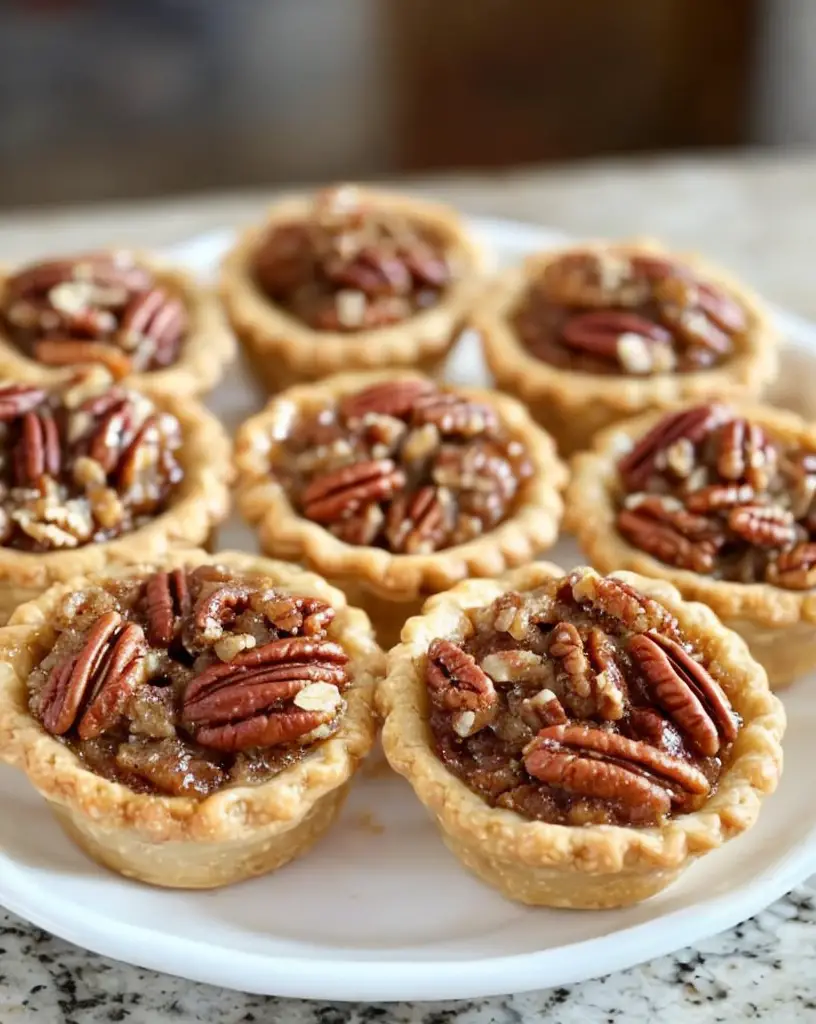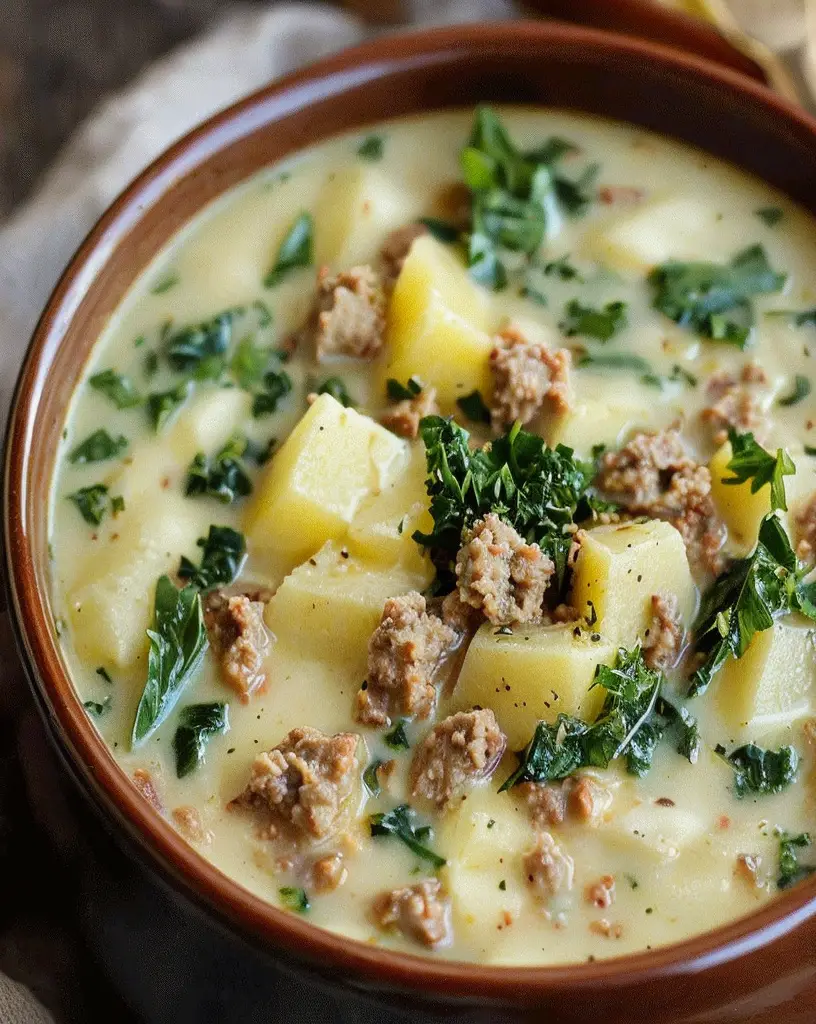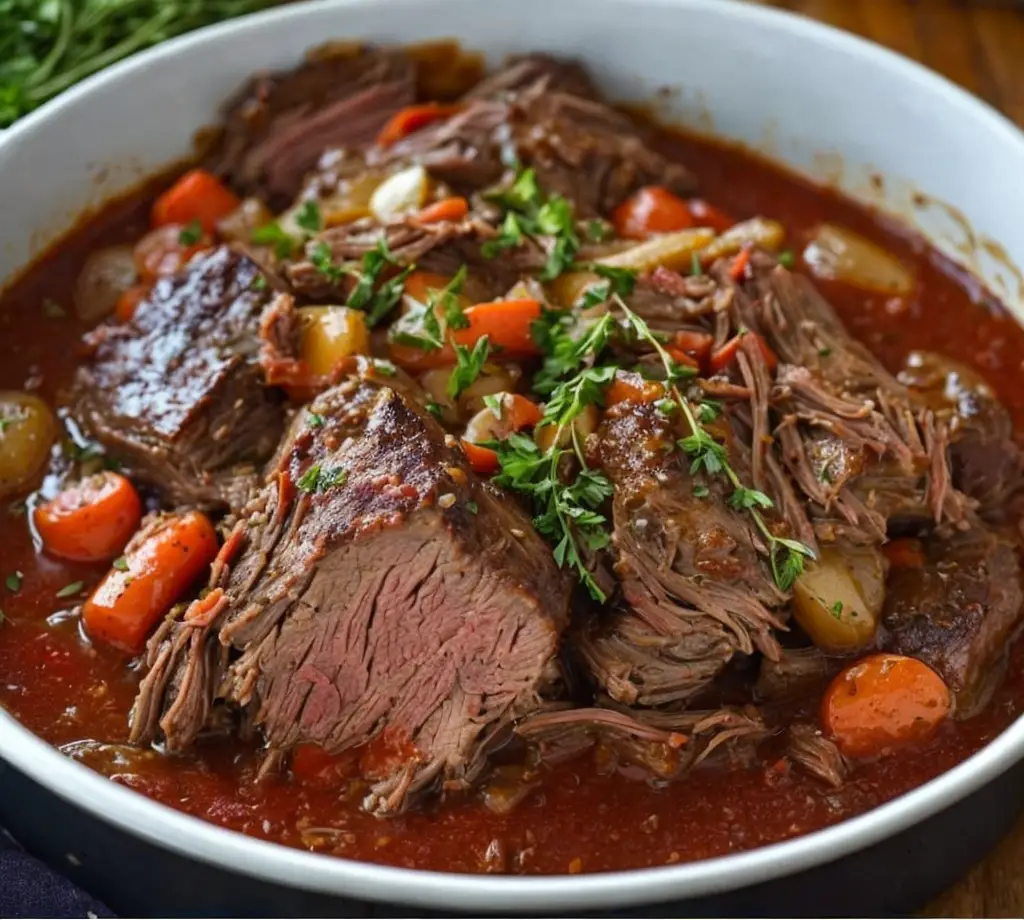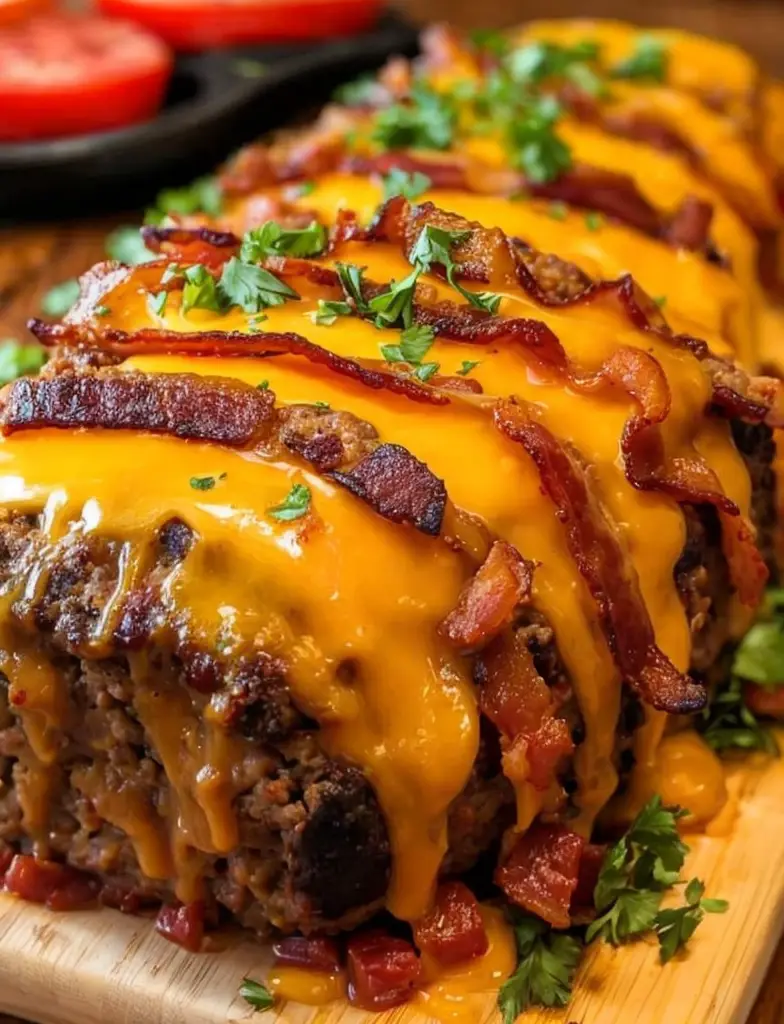Mini Pecan Pies: Irresistible Bite-Sized Treats
Indulge in the deliciousness of mini pecan pies with this simple recipe that combines the rich, nutty flavors of pecans with a buttery, flaky crust. Perfect for holiday desserts or an elegant snack, these bite-sized treats will surely impress guests and satisfy any sweet tooth.
The mini pecan pies are a blend of silky caramel-like filling and crunchy pecans nestled in a golden pastry crust. Each bite offers a satisfying combination of sweetness and texture that makes it a timeless classic.
Whether you’re a seasoned baker or new to the kitchen, these mini pecan pies are straightforward to prepare and even easier to enjoy. Their individual portions make them convenient for parties or picnics, eliminating the need for utensils.
Quick Recipe Highlights
- Flavor Profile: A delightful balance between rich caramel flavors, slightly toasted nuts, and a hint of vanilla.
- Texture: The contrast between the crunchy pecans and the smooth filling creates a gratifying mouthfeel.
- Aroma: The warm, inviting scent of baked pecans and buttery pastry will fill your kitchen.
- Visual Appeal: Golden brown crusts with glazed tops make these pies visually enticing.
- Skill Level Needed: Basic baking skills are needed, making this an appropriate recipe for most home cooks.
- Special Equipment: A muffin tin is essential for achieving the perfect mini size and shape.
Recipe Overview
- Difficulty Level: Considered moderate due to the need for making crust and managing individual portions, but manageable with clear instructions.
- Category: Perfect as a dessert or a sweet snack for gatherings and celebrations.
- Cuisine: Rooted in American Southern traditions, known for its rich use of nuts and pies.
- Cost: Economical, with ingredients available at most local grocery stores at reasonable prices.
- Season: Ideal for fall and winter months when pecans are fresh and plentiful.
- Occasion: These mini pies suit festive dinners, Thanksgiving celebrations, and casual get-togethers.
Why You’ll Love This Recipe
The taste and texture of mini pecan pies are unparalleled, offering a delightful combination of buttery, flaky crust and a rich, nutty caramel filling that pleases any dessert lover. Their small size makes them perfect for portion control or indulging just a little more.
Preparation is convenient, with straightforward steps that allow for easy assembly. Minimal cleanup is required, and the use of muffin tins means no fiddling with pie pans or cutting slices, making serving a breeze.
Rich in pecans, these mini pies provide a good source of healthy fats and notable protein, making them a slightly better indulgence compared to other desserts. They’re a delectable way to enjoy the health benefits of nuts alongside a sweet treat.
Perfect for social gatherings, mini pecan pies are always a crowd-pleaser. Their convenient, individual portions allow guests to enjoy them mess-free, and they make a great conversation starter over coffee or tea.
Cost-effective and accessible, this mini pecan pie recipe requires common pantry ingredients, with pecans being the star. Its affordability makes it an excellent choice for feeding a crowd without breaking the bank.
Historical Background and Cultural Significance
Pecan pies are a storied dessert within Southern United States cuisine, first coming to prominence in the 19th century when settlers began incorporating the native pecan nut into their foods. The pie’s evolution into the mini version mirrors changes in social eating habits towards more single-serving options.
In Southern culture, pecan pies have become synonymous with hospitality and tradition, gracing many a holiday table from Thanksgiving to Christmas. These miniaturized versions uphold these customs while adapting to modern preferences for convenience and accessibility.
Over time, the pecan pie recipe has seen variations with different sweeteners and added ingredients like chocolate or bourbon. Our mini pecan pie stays true to its humble origins but serves them in a way that’s easy to enjoy and share.
Regional variations in pecan pie recipes abound, further adding to its cultural significance. While some might boast added frills and flavors, our recipe emphasizes classic ingredients that highlight the naturally sweet, nutty essence of the pecan.
Ingredient Deep Dive
Pecans hold a special place in culinary traditions, particularly in the South where they are native. Rich in antioxidants and healthy fats, this nut brings both flavor and nutritional value. Choose fresh, shelled pecans for the best flavor; store them in a cool, dry place or freeze them for extended freshness.
Butter lays the foundation for the perfect pie crust. It provides structure and a melt-in-the-mouth flakiness that parchment and shortening can’t match. Unsalted butter is advisable to control the pie’s saltiness, and it needs to stay cold until used for the flakiest results.
Corn syrup and sugar form the base of the pie’s creamy filling, adding a beautiful caramelized flavor. For those preferring lower sugar options, honey or maple syrup can be alternative sweeteners, although the boiling point adjustments may alter the texture slightly.
Eggs are crucial for binding the pie filling and adding richness. Opt for large, fresh eggs to ensure a stable custard that holds the pecans in a cohesive, pleasing layer. Store eggs in a cool environment and bring them to room temperature before use for best results.
All-purpose flour retains its status as the go-to flour for pie crusts, delivering the perfect balance of gluten formation and tenderness. Sift flour before measuring for the most accurate quantity, and keep it sealed in a dry, cool cabinet to maintain freshness.
Common Mistakes to Avoid
- Overmixing the dough can lead to a tough crust. Mix just until the ingredients are combined for the best texture.
- Not chilling the pastry dough can result in a crust that shrinks or loses its shape, so make sure to refrigerate before baking.
- Using low-quality pecans can impact the overall flavor, so select fresher, high-quality nuts for optimal taste.
- Overcooking the filling can cause it to harden; monitor baking times closely to ensure a soft, creamy filling.
- Filling the crusts too full may lead to overflow during baking, so aim for even proportions in each pie.
- Skipping egg wash on the crust can result in dull-looking pies; brushing with egg helps achieve a golden, glossy finish.
- Under-baking the crust could result in a soggy bottom, so ensure the oven is preheated to deliver proper crispness.
- Neglecting to cool the pies can lead to messy serve-ups; allow to cool to room temperature before slicing or serving.
Essential Techniques
Creating a flaky pie crust is crucial for enjoyable mini pecan pies. Cold butter and minimal handling help create airy layers within the crust. Mix until the dough just comes together and ensure it’s chilled thoroughly before baking to prevent shrinkage or tough texture.
Tempering the egg mixture into the sugary syrup is a key step, allowing for a smooth filling without any risk of curdling. Add the egg mixture slowly while stirring constantly to achieve a stabilized, creamy consistency.
Even baking in muffin tins ensures that all mini pies receive equal heat exposure. Rotating the tins halfway through baking can prevent uneven cooking, crucial for achieving consistently baked pies.
Detaching baked mini pies from their tins requires gentleness and a light touch with a knife or offset spatula. Waiting until pies have cooled slightly helps prevent breakage or losing crust edges within the tin.
Pro Tips for Perfect Mini Pecan Pies
Chill the dough in the refrigerator for at least 30 minutes before rolling out to prevent shrinking or cracking when baked.
Always preheat your oven fully before baking the pies, as this helps the crust set quickly and develop a nice, flaky texture.
For an extra hint of flavor, toast the pecans beforehand. This step enhances their natural nuttiness and ensures ultimate crunch in the pies.
Brush the tops of the pies with egg wash for a glossy finish that looks as good as it tastes.
For an impressive presentation, garnish the finished pies with a sprinkle of sea salt or a drizzle of melted chocolate once cooled.
If you wish to add a touch of warmth, incorporate a dash of cinnamon into the filling mixture.
Always allow the pies to cool completely before serving to ensure the filling sets and slices cleanly without spilling over.
Variations and Adaptations
Regional variations can include the addition of bourbon or chocolate chips to the filling, providing additional depth to the classic flavor profile.
For those following a gluten-free diet, swap out the all-purpose flour for a gluten-free alternative that accommodates the same binding quality.
Vegan adaptations might involve using a butter substitute within the crust and an egg alternative in the filling, such as flaxseed preparations.
To add a new texture dimension, incorporate crushed graham cracker or pretzel pieces into the topping for a unique twist.
A seasonal adaptation could involve substituting pecans with walnuts or macadamia nuts for a different aromatic profile.
To create a luxurious presentation, consider topping each mini pie with a dollop of whipped cream or a scoop of vanilla ice cream.
Serving and Presentation Guide
For a rustic presentation, serve the mini pies on a wooden board complemented by a scattering of additional pecans or seasonal fruits.
Using small, decorative plates enhances visual appeal when serving individually portioned pies, adding a touch of elegance.
Traditional accompaniments such as whipped cream or vanilla ice cream align well with the dessert’s rich flavors and add refreshing creaminess.
Modern serving suggestions may include crafting a pecan pie parfait by layering pie crumbles with creamy yogurt and fresh berries in a glass.
Temperature plays a crucial role, as serving at room temperature allows the flavors to meld and the crust to retain crispness.
Consider portion control by arranging pies in cupcake wrappers or decorative liners, offering an attractive and mess-free presentation option.
Wine and Beverage Pairing
Pair your mini pecan pies with a rich, creamy dessert wine like a late harvest Riesling or an icewine, which mirrors the pie’s sweetness without overwhelming it.
For non-alcoholic options, consider serving with a warm spiced cider or a rich hot chocolate, both of which complement the pie’s caramel notes beautifully.
If serving with coffee, recommend a full-bodied, dark roast that aligns well with the pie’s rich flavors without overpowering the palate.
Temperature considerations suggest that beverages are best served warm or at room temperature to harmonize with the freshly baked warmth of the pies.
A small glass of bourbon on the side adds a warm, bold finish matching the dish’s Southern roots and caramel-like qualities.
Storage and Shelf Life
To keep mini pecan pies fresh, store them in an airtight container at room temperature for up to two days or refrigerate for up to a week.
Ensure the container is sealed well to prevent the pies from absorbing odors or drying out, which can affect their texture.
If previously refrigerated, allow pies to sit at room temperature for 30 minutes before serving for optimal taste and texture.
Look for any loss of filling structure or sogginess as a sign of spoilage, and discard any pies that have become overly soft or off-smelling.
Reheating instructions involve placing pies in a warm oven (around 300°F) for 5-10 minutes until they regain their crispness and warmth.
For longer storage, mini pecan pies freeze well. Wrap individually in plastic wrap and place in a freezer bag; thaw overnight in the refrigerator before serving.
Make Ahead Strategies
Prepare and roll out the pie crust dough up to two days in advance, storing it wrapped in the refrigerator for ease of use during assembly.
Between creating crusts and adding filling, keep the crusts in a cool environment like the fridge to retain shape and prevent seepage.
Assess the quality impact of assembling and freezing filled pies before baking, ensuring they maintain flavor and textural properties post-freeze.
During assembly, consider using small ice cream scoops for even filling distribution, ensuring balanced components in each pie.
For reheating, let frozen pies thaw in the fridge, then bake in the oven for 5-10 minutes at a moderate temperature before serving.
To add freshness, garnish finished pies with fresh pecan halves or a sprig of mint before serving at room temperature or chilled.
Scaling Instructions
To halve the recipe, reduce all measurements by half and bake in smaller muffin tins to maintain desired pie size.
Doubling or tripling the recipe may require multiple bake batches or the use of large sheet pans with additional muffin tins to accommodate the volume.
Adjust equipment needs by preparing extra storage containers for scalability and ensuring your oven can handle increased baking load times.
Timing changes should be slight, with extra minutes needed for larger volumes, but monitoring is advised to prevent overbaking or uneven cooking.
Store extra pies using guidelines about airtight containers or freezer bags, ensuring flavor retention and freshness regardless of batch size.
Nutritional Deep Dive
The macro breakdown of mini pecan pies shows a balance of carbohydrates from the crust and filling, healthy fats from pecans, and protein from eggs.
Micronutrients such as vitamin E and magnesium come from pecans, alongside iron and B vitamins from the enriched flour and eggs involved.
Health benefits include pecans’ contributions to heart health due to their omega-3 content, helping when consumed in moderate portions.
Dietary considerations should note the inclusion of dairy within the crust and nuts within the filling, accommodating potential allergens.
Analyze portions by noting the size of the mini pies, which are manageable for enjoying sweet treats without exorbitant calorie intake.
Weight management tips focus on enjoying pies as part of a balanced diet, mindful of their naturally caloric content but rich and satisfying nature.
Dietary Adaptations
For gluten-free adaptations, replace regular flour with certified gluten-free flour in equal quantities to ensure allergen protection without texture loss.
Dairy-free seekers can swap out butter with plant-based alternatives like coconut oil, still achieving desired flakiness without dairy involvement.
A vegan version utilizes flaxseed gel or applesauce as egg substitutes, carefully adjusting ratios to maintain texture and structure in the filling.
Low-carb enthusiasts might replace part of the sugar with alternative sweeteners like erythritol or stevia, tailoring sweetness without carbohydrate increases.
Crafting a keto-friendly pie could emphasize almond flour in the crust and substitute the corn syrup with high-fat cream cheese or similar binders.
For a paleo approach, consider coconut sugar and almond flour variations that align with the whole-foods focus, complementing pecans’ nutritive benefits.
Adaptations for low-FODMAP adherence involve ensuring all ingredients support gut health, particularly through choosing FODMAP-safe nuts and sweeteners.
Troubleshooting Guide
Unclear texture can arise from overcooked filling; lower baking times and monitor carefully to keep the interior creamy yet set.
Flavor balance may falter without proper sweetener ratios, so adjust measurements keeping a taste test in mind before finalizing proportions.
Temperature problems like burnt crusts are solved by maintaining the right oven settings and using parchment paper to shield vulnerable parts during baking.
Equipment challenges arise without muffin tins; consider makeshift molds or ensure evenly shaped forms for baking or switch to mini cupcake trays.
Ingredient substitutions should consider flavor profiles, ensuring any swaps like walnuts for pecans provide naturally similar richness and texture.
Timing concerns can derail the final product if improperly gauged. For precision, use timers and constant vigilance to prevent under or overbaking.
Recipe Success Stories
Community feedback highlights the mini pecan pie recipe as a crowd-pleaser that evokes positive responses at parties and potlucks, celebrated for its satisfying taste.
Reader adaptations rejoice in flavored additions like bourbon or spices, successfully altering our base recipe to rave reviews over variations.
Photography tips include capturing pie details and top perspectives by showcasing golden crusts and glossy finishes for the most appealing presentation.
Readers express joy and creativity in sharing personal spins on the recipe—from embedding chocolate ganache to experimenting with unique nut toppings.
Many enjoy crafting “family bake-offs” where everyone submits their own version of mini pecan pies, promoting both fun and culinary skill in retail.
Frequently Asked Questions
Can I make the pie crust in advance? Yes, preparing and storing the dough in the fridge days beforehand helps streamline the cooking process when ready to bake.
How do I prevent the filling from being too runny? Ensure the correct syrup-to-egg ratio and bake within the advised duration, accommodating cooling time for proper setting.
Is it possible to use a different nut for these pies? Absolutely, substituting nuts like walnuts, hazelnuts, or almonds can bring unique flavors and suit dietary needs.
Can I freeze leftover mini pecan pies once baked? Freezing individually wrapped pies in airtight containers maintains quality for longer-term storage, also easing reheating.
How do I know if my pecans are still fresh? Fresh pecans should have a pleasant, nutty scent and feel firm to the touch, without any strong odors or discolored spots.
What if I don’t have a muffin tin? Try using small ramekins or improvising with cupcake liners set within baking sheets to create the desired mini pie shape, though muffin tins provide the best form.
How can I present these pies uniquely for a party? Consider individual packaging with personalized labels or decorative garnishes highlighting seasonal themes for an inviting display.
Which season is best to make mini pecan pies? Autumn and winter months, aligning with holiday traditions when pecans are abundant and celebrations favor rich, comforting desserts.
What if my pie crust keeps shrinking? Chillin’ the dough adequately before baking and minimizing handling ensures crusts retain size and shape post-bake, reducing shrinkage.
Are there low-sugar alternatives for sweetness? Honey, maple syrup, or artificial substitutes like stevia can replace corn syrup and sugar, adapting to low-sugar diets while maintaining flavor.
Can I make these vegan-friendly? Using plant-based butter options and egg replacements like chia seeds allows for vegan adaptation without compromising on taste or texture.
Additional Resources
Explore related recipes such as classic pecan tarts or find tips on achieving the perfect pie crust in [link to techniques post].
Discover more about key ingredients like pecans in [link to ingredient spotlight article] and the benefits of incorporating them into everyday dietary habits.
Utilize guides on seasonal variations, offering insight into sustaining interest through diverse adaptations of popular pie recipes in [link to guide].
Uncover equipment reviews, such as muffin tin comparisons or baking sheet recommendations, to support and enhance baking endeavors in [link to recommendations].
Join the Conversation
Engage with our community by posting your mini pecan pie photos on social media, tagging us with your creative presentation ideas.
Share your results and receive feedback and suggestions by submitting photos or reviews on the recipe’s comments section.
Be part of our vibrant baking community—show off your unique recipe adaptations and discuss techniques or ingredient experiences with like-minded connoisseurs.
Encourage recipe swaps, sharing winning combinations or personalization tweaks that led to success and applause.
Contribute to recipe dialogue by suggesting improvements or sharing your learned tips to aid those attempting mini pecan pies for the first time.
The Recipe
Mini Pecan Pies
Serves: 12 mini pies
Prep Time: 20 mins
Cook Time: 30 mins
Total Time: 50 mins
Kitchen Equipment Needed
- Muffin tin
- Mixing bowls
- Rolling pin
- Pastry cutter
- Measuring cups and spoons
- Whisk
- Baking sheet
Ingredients
- 1 1/4 cups all-purpose flour
- 1/2 cup unsalted butter, chilled and diced
- 1/4 cup cold water
- 3/4 cup corn syrup
- 1/2 cup packed brown sugar
- 3 large eggs
- 1 1/2 cups pecans, chopped
- 1 tsp vanilla extract
- 1/4 tsp salt
Directions
- Preheat your oven to 350°F (175°C). Grease a muffin tin thoroughly.
- In a mixing bowl, combine flour and salt. Cut in butter until mixture resembles coarse crumbs.
- Stir in cold water, a tablespoon at a time, until the dough forms a ball. Chill the dough for about 30 minutes.
- On a floured surface, roll out the dough to 1/8-inch thickness. Cut into 12 circles using a round cutter.
- Press each circle into the bottom and sides of the muffin tin cups.
- In another bowl, beat together corn syrup, brown sugar, eggs, vanilla, and salt. Stir in the pecans.
- Fill each crust with the pecan mixture, evenly distributing it among the muffin cups.
- Bake for 25 to 30 minutes or until filling is set and the crust is lightly golden brown.
- Cool in the muffin tin for 10 minutes before carefully removing to a wire rack to cool completely.
Recipe Notes
- If desired, add a pinch of cinnamon for warmth and flavor.
- The pies can be stored in an airtight container at room temperature for two days.
- For a fun garnish, add a pecan half on top of each pie before baking.




